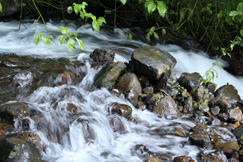Fellows participate in a structured program of face-to-face experiences including clinical work, case presentations and didactic learning. Another key emphasis is board review. ATS is working with the program leaders to identify how technology can support their goals and also capture elements of the program that are literally too good to miss.
I witnessed one example of this during a recent visit to the LBJ site. Dr. Martin Raber and Dr. Eid engaged the fellows in a discussion of everything from treatment strategies to professional ethics to burnout among oncologists. Dr. Eid and his team know there's no substitute for being there, but they hope to make those experiences less ephemeral and share the learning with those that can't be there in person. Their approach is scientific, with a strong interest in also using the technology tools to measure effectiveness and learning outcomes.
We are just getting started - but it's already too much fun to call it work.
Stay tuned.


